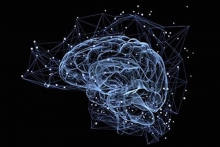There’s a whole world between your ears. And neuroscientist Bing Brunton, assistant professor of biology, would like to visit it.
Brunton likens the complexity of the human brain to a bustling world, complicated at every level. Each neuron in the brain — and there are billions — contains thousands of connections that function like little cities, with infrastructure and energy factories and workers and highways to deliver supplies and remove refuse. “And that’s just a tiny part of the brain,” says Brunton. “When we start zooming out, there is an enormous gallery of different types of neurons, and then layers of organization, and different areas of the brain with different functions.”

"I’ve always been drawn to quantitative techniques, quantitative explanations for things,” says Bing Brunton.MEDIA CREDIT: ISAIAH BROOKSHIRE
To study such a complex organ, Brunton believes that quantitative methods — analyzing data from brain activity — is the best approach. “We have 86 million neurons in the brain, and every single one of them talks to approximately 1,000 other ones,” she says. “When you’re working with a system that complicated, you need a mathematical understanding. I’ve always been drawn to quantitative techniques, quantitative explanations for things.”
Brunton explains that brain cells talk to each other using electrical signals — the same electricity that powers a computer or radio. The way we experience the world, produce sensations, reason, and experience emotion are all based on those signals. And just as a car antenna picks up radio signals, wires placed in the brain can measure and record electrical activity from nearby neurons.
Read the full article in Perspectives.

